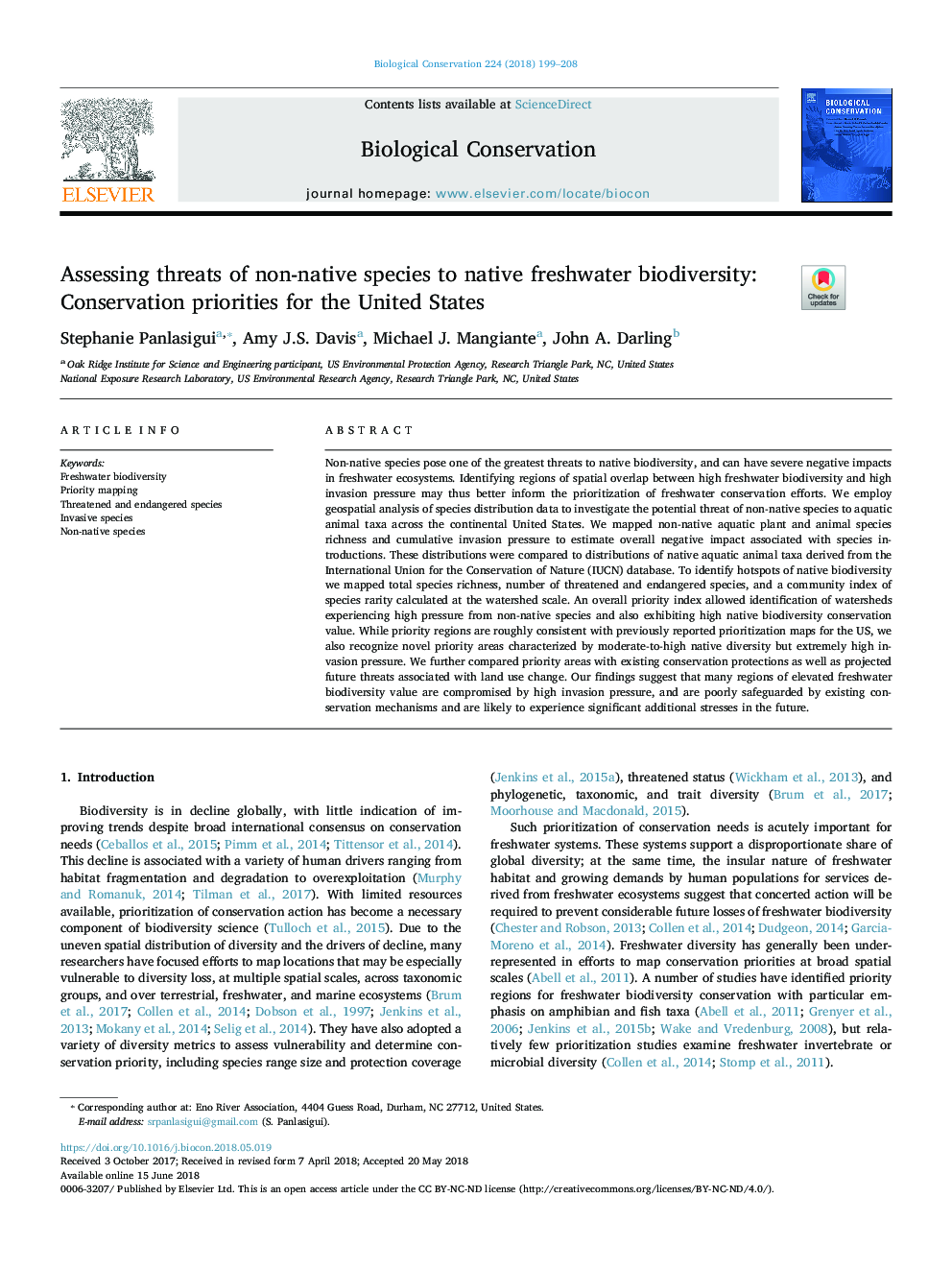| Article ID | Journal | Published Year | Pages | File Type |
|---|---|---|---|---|
| 8847198 | Biological Conservation | 2018 | 10 Pages |
Abstract
Non-native species pose one of the greatest threats to native biodiversity, and can have severe negative impacts in freshwater ecosystems. Identifying regions of spatial overlap between high freshwater biodiversity and high invasion pressure may thus better inform the prioritization of freshwater conservation efforts. We employ geospatial analysis of species distribution data to investigate the potential threat of non-native species to aquatic animal taxa across the continental United States. We mapped non-native aquatic plant and animal species richness and cumulative invasion pressure to estimate overall negative impact associated with species introductions. These distributions were compared to distributions of native aquatic animal taxa derived from the International Union for the Conservation of Nature (IUCN) database. To identify hotspots of native biodiversity we mapped total species richness, number of threatened and endangered species, and a community index of species rarity calculated at the watershed scale. An overall priority index allowed identification of watersheds experiencing high pressure from non-native species and also exhibiting high native biodiversity conservation value. While priority regions are roughly consistent with previously reported prioritization maps for the US, we also recognize novel priority areas characterized by moderate-to-high native diversity but extremely high invasion pressure. We further compared priority areas with existing conservation protections as well as projected future threats associated with land use change. Our findings suggest that many regions of elevated freshwater biodiversity value are compromised by high invasion pressure, and are poorly safeguarded by existing conservation mechanisms and are likely to experience significant additional stresses in the future.
Related Topics
Life Sciences
Agricultural and Biological Sciences
Ecology, Evolution, Behavior and Systematics
Authors
Stephanie Panlasigui, Amy J.S. Davis, Michael J. Mangiante, John A. Darling,
